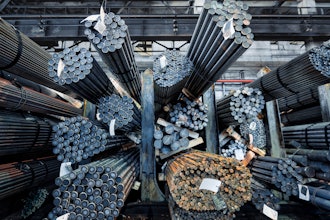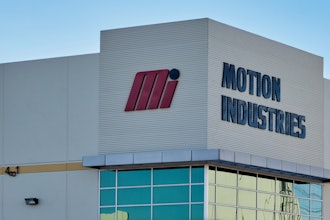From the smallest manufacturing plant that employs manual methods to create their product to the most elaborately automated plant where conveyors dominate floor space, the majority of manufacturers have at least one conveyor in their plant. Whether it’s a single conveyor employed to take away product from a packaging machine, or the transportation system that connects all areas of a plant, conveyors, like the tires on a vehicle, are often the least thought about component in a processing line.
While OEM’s and manufacturers may have different motivations when choosing conveyors, the end result is that they want the system to be just as inconspicuous as the tires on a vehicle.
Although conveyors are critical components in streamlining operations, many manufacturers often turn to the same technology they have been using for twenty plus years because they have become accustomed to handling the problems associated with a particular piece of equipment. But as the competition tightens in the manufacturing arena and the use of automation equipment broadens, engineers are motivated to look beyond the status quo in order to move materials and products more efficiently.
Here two OEM engineers explain how employing modular conveyor technology gives them a competitive edge by reducing overall costs from the initial outlay of money, to reduced maintenance and modification costs and the elimination of hidden costs associated with more traditional conveyor systems.
Application Engineer, Pat Rambo, for Fresco Systems USA, Inc. in Telford, PA, manufacturer of flexible packaging equipment and materials to high profile customers, wanted to get “away from doing the same thing, the same way, year after year.”
Since Fresco Systems offers lean support to all of their customers, by evaluating their facilities and balancing material purchases based on production history, it is vital that any equipment they couple with their machinery with also lends itself to being lean.
Rambo started searching the trade magazines for a conveyor to integrate with their packaging machine for an application of packaging 50 plus coffee bags per minute, and an ad for a modular conveyor caught his eye.
“I thought I would try it because it was different,” Rambo says. “It offered the flexibility of giving the customer exactly what they needed. Instead of a standard conveyor with 6 or 8 foot lengths that cost us a tremendous amount to modify, the DynaCon conveyor offered an off the shelf customizable conveyor and at a competitive price which is important when it comes to getting the best price for our customers.”
Brian Klughardt, Director of Engineering at Taylor Products, a Division of Magnum Systems, Kansas City, KS, manufacturer of a broad range of modular packaging components including vertical form-fill and seal packaging machines for food and agricultural industries, agrees that finding the best cost for clients is essential. “My trick is to find a like-minded company that puts out a quality and robustly constructed piece of equipment that is extremely reliable and economically priced.”
Taylor Products, specializes in working with first time automation clients and Klughardt says, “some of our customers don’t know a lot about packaging equipment and auxiliary equipment so they kind of look to us to tell them what they need and that’s why we offer a takeaway conveyor to remove product from underneath our machine.”
“There is a conveyor out there that we used to use, but the price was 25 percent of my machine cost and I can’t see asking a customer to pay that much for a takeaway conveyor.”
Klughardt too went in search of a better product to offer his clients and discovered the same modular conveyor system at a client’s plant. “Not only did it cost 35 percent less than a traditional conveyor, it also saved money on freight and installation costs.”
Authentic modular conveyors ship partially assembled in a box taking minimal space on the delivery truck. “With traditional conveyors, the whole thing is metal so they are fully assembled when you get them. And quite honestly, that adds to the cost. Because a traditional conveyor is put together, the box is bigger, it requires special crating and it costs more to ship it, so your overall cost is higher,” Klughardt says.
Although traditional conveyors come assembled as one piece, the installation time is still 5 times that of a truly modular conveyor.
Klughardt says that when they first received the DynaCon Modular Conveyor System, they wanted to know how long it would take to put together so they timed it. “Without knowing anything about the danged thing, we put it together in 20 minutes. And we actually removed a section out of it, because the conveyor would have been too tall for what we needed so we actually removed a section after we already put it together. So in essence we kind of took it back apart and re-assembled it,” he says.
“They shipped us the conveyors with the fasteners already next to where they needed fastening,” he adds. “And they also included an Allen-wrench that fit into a cordless screwdriver.”
Rambo, from Fresco Systems, says, “it’s essentially like putting together big Legos. They’re made of a high tech polycarbonate material so the conveyors are extremely light, making them easy to assemble. Each conveyor we have bought from them built and installed in under a half an hour whereas others would have taken us one to three hours depending on the conveyor we would have used.” Animations of installations can be accessed at www.dynamicconveyor.com/technicalinformation/assemblyassistance.
Initial cost savings isn’t the only criteria that Rambo and Klughardt used when deciding on which conveyor they should couple with their machinery. Being veterans in the manufacturing arena, they know that down the line costs such as ongoing maintenance, modifications, and parts replacement can quickly eat away at initial savings.
Even something as simple as regular wash downs in the food and chemical industries can add up in terms of down time and labor costs. Since the majority of Taylor Products customers are in those industries, Klughardt recognizes that reality. “Since the conveyor is plastic it is basically non-corrosive and non-rusting so you don’t have to worry about it,” he says. “If you need to wash the thing down, you can take a hose to it and you don’t have to worry about anything rusting.”
Additional regular maintenance that is often associated with conveyors is time-consuming belt tensioning, recurrent belt replacement and frequent lubrication; however, Dynamic Conveyor, the original manufacturer of truly modular conveyors, designs their systems to be self-lubricating, uses a positive sprocket drive and tracking, with plastic link-style belting that eliminates slippage and edge damage so there is no need for regular belt tensioning or replacement reducing maintenance costs by up to 95 percent.
With standard conveyors and belting, when a section of the belt is damaged the entire belt needs replacing and costs between $600 to $1000; whereas, with a truly modular conveyor system, only the damaged section of the belt needs replacing not only saving money, but also time.
Beyond standard maintenance costs, manufacturers also need to think in terms of the future when considering purchasing a conveyor. Fresco Systems’ Rambo says, “I’ve been to many plants where there are lots of conveyors that aren’t being used anymore and just sitting on the side taking up space. I’ve also seen conveyors that have been chopped up in an effort to adapt them and it just looks nasty.”
Since Fresco acts like a one-stop-shop for their customers, and because their customers often automate their systems in phases, the ability to reconfigure a conveyor is another financial factor Rambo likes. The same customer that purchased Fresco’s machine to package bags of coffee is now adding Fresco’s automated case packaging system.
“I’m working with DynaCon to reconfigure those conveyors and integrate them into a new case packaging system—so all of those conveyors that we purchased earlier this year, will be reused for a new application,” says Rambo.
Sometimes when plants expand their lines, the length of the conveyor also increases. With truly modular systems, modules as small as 6”, can be purchased allowing manufacturers to customize a conveyor with off-the-shelf parts at a nominal cost.
The ability to reuse and reconfigure conveyor parts eliminates the need to purchase an entirely new conveyor, new freight charges, and one of the most overlooked hidden cost of storing or disposing of useless conveyors.
Floor space is a premium in any manufacturing facility and finding the space to store a 24-foot conveyor that is no longer applicable becomes a problem. Even if it is possible to store that conveyor for later use, the livelihood of that piece of equipment is reduced especially if it is stored outdoors or even in a shelter.
Further hidden costs that manufacturers must consider when examining the total cost of ownership of a conveyor system is the systems warranty and energy usage. Most conveyor manufacturers have one-year warranties, while Dynamic Conveyor offers a 5-year warranty on its own manufactured DynaCon product line. The company also utilizes the most energy efficient motors, which range from 1/30 HP to 1 HP, that cost just pennies a day to operate. Specifying the right energy efficient motor for each application, and easily exchanging it when torque requirements change, keeps kilowatt usage to a minimum.
Truly modular conveyors “have an awe factor when you just look at them because the design is so simplistic,” says Rambo. “It is the easiest thing to put together. There is not much maintenance, almost no adjustments required whatsoever, any modifications are made in just a matter of seconds, and that makes them a great conveyor and our customers love that.”
For more information, visit www.dynamicconveyor.com.






















